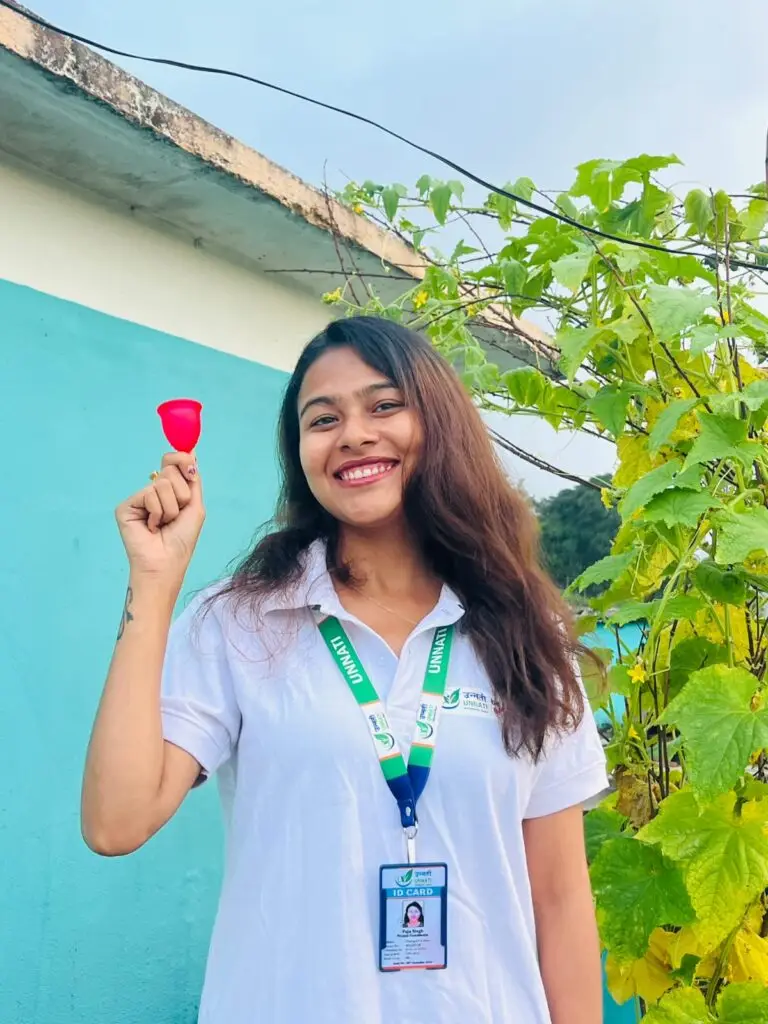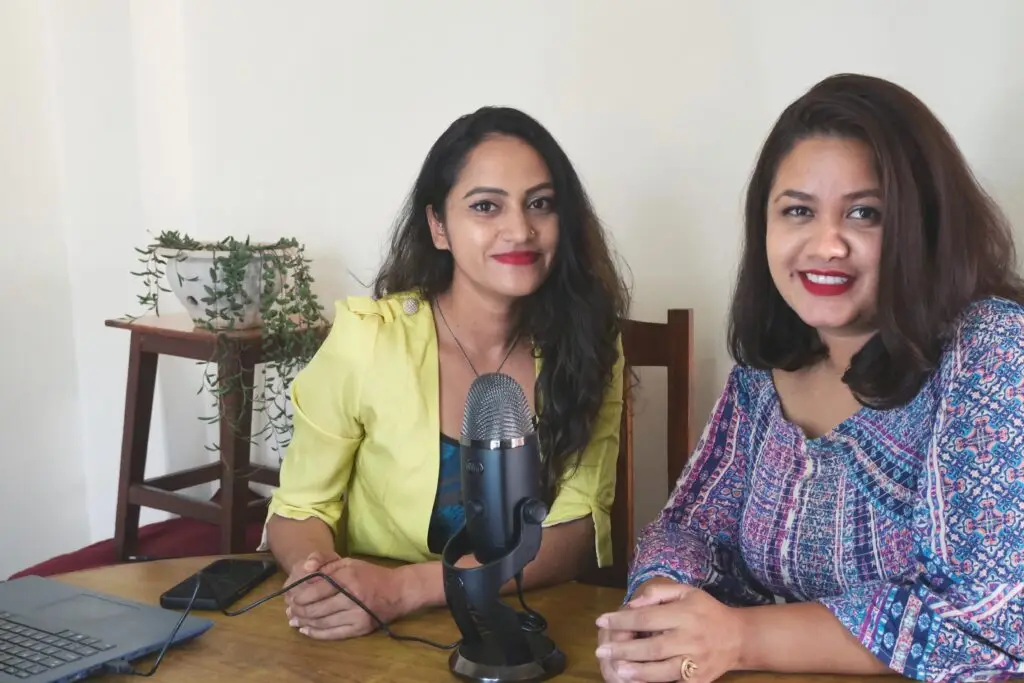When 17-year-old Priyanka Pariyar was growing up, she noticed her mother would go away from her home for days during menstruation, barred from seeing male family members. “She ate only rice and salt — no milk or curd — and was isolated in a hut without electricity,” recalls Pariyar, a teenager from far-western Nepal, where chhaupadi — the custom of banishing menstruators to ghot (huts) to live and sleep, is still prevalent.
Though banned by law in 2017, the practice persists, “often less severely in many homes,” explains Priyanka.
Priyanka’s own experience is different: she has a bed, her own room, nutritious food, electricity, and a menstrual cup. She convinced her mother to accept and welcome these changes after menstrual health training from be artsy, an NGO addressing menstrual health through storytelling, education, and photography.
Cups of Change
Clara Garcia i Ortés, founder of be artsy, began promoting menstrual health education after seeing chhaupadi’s reality during a trip to Achham district, in far-western Nepal.
Recalling a first meeting with 25-30 locals—including health officers, nurses, priests, and traditional healers— Clara notes that menstrual health was poorly understood. Priests and traditional healers blamed each other for starting chhaupadi.
“It was clear that these actors have never been in the same place talking about these subjects,” explains Clara. “They used the word chhaupadi for both menstruation and the practice.” Teaching them to distinguish between menstruation and the practice itself was key. Garcia insisted on using the two words “mahinavari (menstruation in Nepali) and chhaupadi, separately.”
By the end, “They started to use two words. Understanding that these — traditions and menstruation—are two different things, that is a victory,” Clara explains. “From the beginning till now, it has been a big change.”
Be artsy’s Rato Baltin (Red Bucket) project addresses menstrual health, gender equality, and empowerment through education, menstrual kits, and photography workshops. As part of it, students receive a bucket, soap, menstrual cup (optional), and a towel each. The schools receive books on reproductive health, puberty and menstrual management.
According to Clara, priests and spiritual healers helmed the distribution of menstrual cups, “a new technology that keeps women clean during menstruation, because blood is not coming out”.
Since 2017, the project has reached 80,000 boys and girls and distributed over 5,500 menstrual cups. These trainings have helped shift the mindset of locals, and Priyanka’s mother is one of them.
“In the earlier days, those who menstruate would build huts far away from their homes, sometimes without blankets,” Pooja Singh, project coordinator at be artsy shares. “Now, menstruators stay in a separate room inside their houses with blankets and mattresses….This is very progressive for Achham.”
This initiative isn’t limited to older students or women’s groups. Children in grades 3 and 4 also participate through games that challenge gender bias and colour bias, according to Singh, who shares an example of the bias being that “this work is only for boys or that work is only for girls; or pink is for girls only or blue is for boys only”.
The workload from house chores should be equally distributed, chimes Clara, saying “that is where the inequality of girls education starts, both should have same workload”.
Cultural Tools for Change
Finding what worked in Achham took trial and error. Initially, be arsty used the Menstrupedia comic, a puberty guide that has educated 13 million. “But we thought the book didn’t reflect the reality of Achham. It had nothing to do with the rural places we’d been working in,” says Clara.
Then Clara crossed paths with Sophie Maliphant, the illustrator of the book Kumari’s Adventure With Her Moon Cycle. Collaborating with over 70 Nepali illustrators, Maliphant crafted a book that addresses Nepal’s menstrual taboos and experiences, approaching it through an ethnically diverse lens, and connecting the similarities between human body and the seasons of nature.
The story and visuals reframe periods as strength, not shame, and children love the books. “Younger children are more interested because of the pictures,” explains Pooja.
Be artsy distributes the book to local schools in Achham to accelerate menstrual health education as part of the Rato Baltin project.

Kumari’s Adventure with Her Moon Cycles
For teenager Anushka Gupta, the book was an eye-opener.
“First I used to think why my mother uses pad,” says Anushka. “But when I flipped through the pages of Kumari’s Adventure with Her Moon Cycle, I began understanding [menstruation] bit by bit.”
She took the book to her mother, who refused to explain, saying if Anushka learned about it, she’d, “get it sooner”. So an inquisitive Anushka turned to her school friends.
Her story shows how one book is sparking menstruation conversations—in homes, schools, and public spaces—where silence once ruled.
“Menstruation happens to every woman. This is womanhood. It is a monthly cycle where the dirty blood is flushed out of the body,” they told Anushka.
“I love the book because if informs readers like me about menstruation,” she says.
Yet despite these growing conversations, deep-rooted menstrual taboos and myths still persist across Nepal.
Menstrual taboo and myths
Period restrictions remain common across Nepal—banning menstruators from kitchens and temples, touching water sources or pickle jars, sleeping on their beds, or eating with family. Many are denied fruit, dairy, or nutritious food—rooted in the belief that menstruation makes them impure.
“I first heard the word impure in relation to my body when I got my first period at 14,” recalls Priyanka Budhathoki, co-founder of Period Kaa Kura, Nepal’s first menstrual health podcast. “I was sent to my aunt’s house and was forced to hide for seven days. That’s when I lost my self-esteem.”
No one explained what menstruation was—only that she was “impure and unclean”.
“That’s what this narrative does. It turns a natural, biological process into something shameful. It forces menstruators to hide, to disconnect from their bodies, and to feel disgust instead of dignity,” she said.
These lived realities pushed Budhathoki and Shristi Kafle to launch Period Kaa Kura in 2020, breaking the silence through open conversations. Their podcast debunks myths and covers an array of topics from endometriosis and menopause to menstruation among people with disabilities and hygiene practices.
Menstrual discrimination is important to discuss, “but the broader picture we are missing here is menstrual health education,” says Budhathoki. “We need to normalise period as a biological function,” she explains, adding that we must also start talking about things like “PMS depression, period pain, non-binary and trans men period struggles and menopause”.
Menstrual challenges beyond physical restrictions
Despite over 80 organisations working on menstrual health in Nepal, many girls still miss school during periods.
A lack of access to menstrual health awareness — beyond just physical restrictions — continues to impact education. A UN report states that 15% of girls globally miss school due to menstruation. In Nepal, a 2022 Save The Children study found that 17.8% of the surveyed girls missed school for their entire cycle.
But the discourse is getting louder. Nepal’s National Assembly endorsed a motion to end menstrual discrimination. The government allotted 1.29 billion rupees in its national budget for sanitary pad distribution, expected to reach 1.3 million girls.
“We think it is huge because now menstrual health is not just a women’s issue,” says Budhathoki.
But this is not enough. In order to change the way menstrual discrimination operates, she explains: “We are implementing programmes, but what we need is mindset shifts — and that’s not happening.”

She adds that “we need to work together to have more open conversations” in order to understand communities and why they do what they do — to change the way menstrual discrimination operates.
“If the culture is dehumanising you as a woman, we have every right to stand up against it,” she says. “We are here for menstrual justice, helping people understand our bodies, our cycles, and the discrimination we’ve been living with for generations.
“Menstruation is not dirty. It’s not impure. It’s a sign of life. And the more we say that out loud in our homes, in schools, in public, the more we make space for dignity.”
That’s why Period Kaa Kura exists: to tell stories, create space for all—including those who don’t menstruate—to understand menstruation and help break the taboo and stigma.

